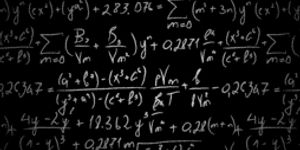Neuroscience
Early warnings signs of dementia and Alzheimer's disease
MAR 14, 2014 12:00 AM PDT
Share
Who Killed The Dinosaurs? Maybe Dark Matter Did It!
 A couple of theoretical physicists have come up with an interesting and somewhat controversial variant of the meteorite-strike theory on the demise of the dinosaurs-that dark matter played a role in the extinction process. In a paper that is scheduled to appear in Physical Review Letters, scientists from Harvard University have proposed that dark matter in the form of a disk may be producing cyclic large-scale meteorite strikes of the type that is believed to have dispatched the dinosaurs.
A couple of theoretical physicists have come up with an interesting and somewhat controversial variant of the meteorite-strike theory on the demise of the dinosaurs-that dark matter played a role in the extinction process. In a paper that is scheduled to appear in Physical Review Letters, scientists from Harvard University have proposed that dark matter in the form of a disk may be producing cyclic large-scale meteorite strikes of the type that is believed to have dispatched the dinosaurs.The idea of periods of higher intensity meteorite strikes on the Earth is nothing new, but the question is why these periods occur. Some event must take place to send comets from the Oort cloud hurtling toward the inner sections of the solar system.
One event that has been proposed in the past is that the Oort cloud is disturbed by a companion star to our Sun that has not yet been detected. This companion star, which has been called a "Death Star" or "Nemesis", would pass by on a regular basis (albeit with a very long time between visits) and cause material to become propelled from the Oort cloud.
While it's awfully hard to go against any theory that makes a reference to a "Death Star," the Harvard team has revived a different proposal from the past-that the path that the Sun takes through the Milky Way is to blame.
Picture the swirling arms of the relatively flat Milky Way galaxy, and then picture the sun bouncing up and down through this flat plane as it circles around the center of the galaxy. As it goes through this oscillating motion, the Sun cuts through a relatively dense dark matter layer, creating gravitational disturbances (pushes and pulls) that release comets from the Oort cloud.
The model has previously been dismissed, and not just for the lack of a "Death Star." Models of this phenomena could not create a strong enough gravitational effect to produce the proposed release of comets into the solar system. However, the Harvard research team has proposed that dark matter in the form of a disk in the center of the Milky Way would produce this effect.
Theoretically, the weak interactions of dark matter should make formation of a disk unlikely. The research team has suggested that a small amount of the dark matter may act differently. They are building on work from 2013 to explain signals from the Fermi Space Telescope that were similar in nature to dark matter signals.
Using this "dissipative dark matter," as the research team calls it, the team produced a model dark disk with a thickness of around 35 light-years and a density near one solar mass per squared light year. This level of density has enough force to create the comet showers, and according to the model they would occur around every 35 million years-roughly matching estimated cycle of meteorite strikes on Earth based on impact craters.
For some scientists, the collective error in impact measurements and degree of assumptions make this theory some pretty weak tea. (We guess it can't compare to a Death Star). In this case, we may actually get definitive answers, as the Gaia mission from the ESA (European Space Agency) is scheduled to map the Milky Way's gravitational field. May the best theory win.
You May Also Like
Loading Comments...








